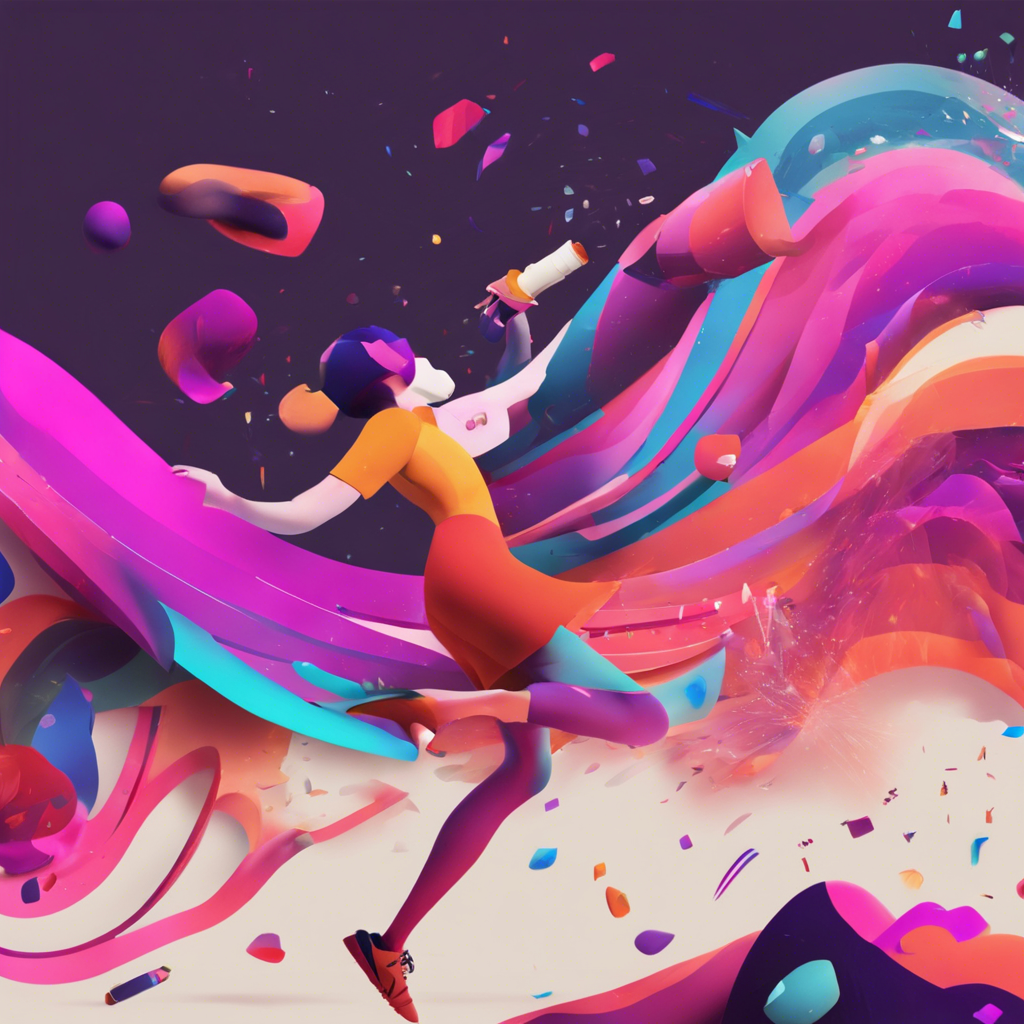How do you become creative in motion graphics?
Unlocking Creativity: A Guide for Motion Graphics Artists
Motion design, an ever-evolving discipline of digital artistry, requires creativity beyond measure. It’s more than just animating text or images; it involves storytelling through movement, sound, color, typography – all combined into one engaging piece of work. But how can we unlock our full potential when creating such pieces? Here’s a guide to help unleash your inner artist within this dynamic field.
Embrace Inspiration from Diverse Sources
Creative minds don’t exist in isolation. They feed off inspiration drawn from various sources – films, music videos, video games, books, nature walks…the list goes on! To keep those artistic juices flowing, make time each day to explore different forms of media outside of traditional graphic arts spaces. Even something like browsing Pinterest boards filled with stunning visual compositions could spark ideas worth exploring further down the line during actual project development stages.
Remember too that while certain elements may have been done before (and well), there will always remain opportunities for fresh interpretations given unique individual perspectives brought forth due personal experiences/interests etcetera making every piece distinctively yours.
Cultivate a Strong Foundation in Design Principles
To unlock creativity in motion graphics, it’s essential to have a solid understanding of design principles. Concepts such as composition, color theory, typography, and visual hierarchy provide the groundwork for creating visually appealing and effective animations. Regularly revisiting and practicing these principles can sharpen your skills and give you the confidence to experiment and innovate. Additionally, studying the work of renowned designers and animators can provide valuable insights into effective design practices.
Experiment with New Tools and Techniques
The motion graphics field is constantly evolving with new tools, software, and techniques. Embracing these advancements can lead to breakthroughs in your creative process. Spend time exploring new features in software like Adobe After Effects, Cinema 4D, or Blender. Learning new plugins, scripts, and techniques can open up possibilities for creating more sophisticated and unique animations. Don’t hesitate to step out of your comfort zone and experiment with unfamiliar tools – this can often lead to unexpected and exciting results.
Storytelling and Concept Development
At the heart of compelling motion graphics is strong storytelling. Before diving into the technical aspects of a project, invest time in developing a clear concept and narrative. Consider the message you want to convey and how best to communicate it through motion. Storyboarding is an effective technique for planning your animation and ensuring that each element serves a purpose within the overall story. A well-thought-out concept can elevate a simple animation into an engaging and memorable piece.
Collaboration and Feedback
Collaborating with other creatives can significantly enhance your work. Whether it’s working with other designers, animators, musicians, or writers, different perspectives can lead to innovative solutions and ideas. Additionally, seeking feedback from peers and clients is crucial for growth. Constructive criticism helps identify areas for improvement and provides opportunities to refine your work. Being open to feedback and willing to iterate on your designs can lead to higher-quality outcomes.
Maintain a Sketchbook and Idea Journal
Keeping a sketchbook or idea journal is a practical way to capture inspiration and brainstorm concepts. Regularly sketching ideas, jotting down thoughts, or creating quick mockups can serve as a reservoir of creativity. These initial ideas can be revisited and developed into full-fledged projects. A sketchbook also allows for spontaneous creativity, enabling you to document fleeting ideas before they are forgotten.
Balance Structure and Flexibility
While having a structured workflow is important, allowing room for flexibility can foster creativity. Rigidly adhering to a predefined plan can sometimes stifle innovative thinking. Build flexibility into your process by setting aside time for exploration and improvisation. This can involve experimenting with different animation styles, playing with timing and pacing, or trying unconventional techniques. Balancing structure with creative freedom can lead to more dynamic and inventive work.
Stay Updated with Industry Trends
The motion graphics industry is fast-paced, with trends emerging and evolving rapidly. Staying updated with the latest trends can provide inspiration and ensure your work remains relevant. Follow industry blogs, participate in webinars, attend conferences, and engage with online communities. Platforms like Behance, Dribbble, and Instagram are excellent for discovering current trends and connecting with other motion designers. While it’s important to stay informed, always strive to incorporate your unique voice and style into your work.
Practice Regularly and Set Challenges
Consistent practice is key to unlocking creativity and honing your skills. Set aside time each day or week to work on personal projects or challenges. These can range from creating a short animation based on a daily prompt to developing a complex scene over a longer period. Participating in design challenges and competitions can also provide motivation and deadlines, pushing you to produce your best work.
Conclusion
Unlocking creativity as a motion graphics artist involves a blend of inspiration, continuous learning, experimentation, and storytelling. By embracing diverse sources of inspiration, cultivating a strong foundation in design principles, experimenting with new tools, developing compelling narratives, collaborating with others, maintaining a sketchbook, balancing structure and flexibility, staying updated with industry trends, and practicing regularly, you can unleash your full creative potential. The journey of a motion graphics artist is one of constant exploration and growth, where each project is an opportunity to push the boundaries of your imagination and skill.
Discover more from EMD
Subscribe to get the latest posts to your email.
